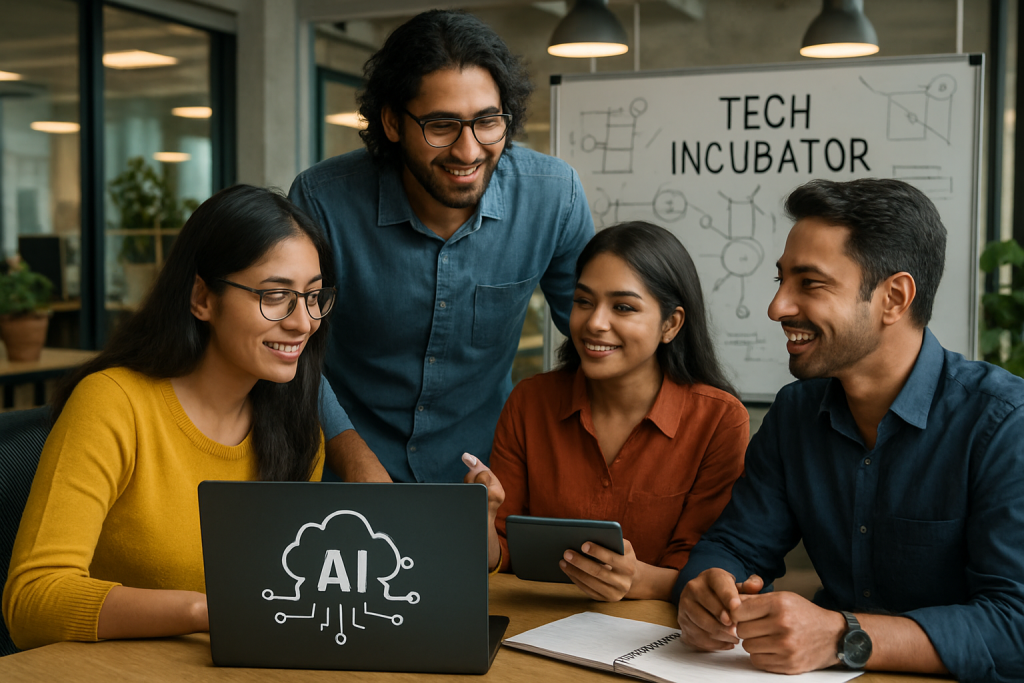India is making bold moves in artificial intelligence with the IndiaAI Mission. The Ministry of Electronics and Information Technology launched this initiative in 2024.
The mission aims to build a strong AI ecosystem for Indian needs.
Union Minister Ashwini Vaishnaw announced a major expansion of national AI infrastructure on Friday. Speaking at the ‘IndiaAI 6 Make AI in India, Make AI Work for India’ event, he revealed that India’s compute capacity now exceeds 34,000 GPUs, which includes 15,916 new units added to the existing 18,417 empaneled GPUs, according to government announcements.
“Technology should not be left in the hands of a few,” Vaishnaw said. “It is important that a larger section of society can access it, develop new solutions, and get better opportunities. That’s the philosophy behind the IndiaAI Mission.”
The mission stands on seven key pillars addressing the AI value chain. These pillars focus on compute infrastructure, foundational models, safety standards, and talent development.
Why It Matters Now
This infrastructure boost gives thousands of developers access to supercomputing power.
The shared AI training platform serves startups, researchers, and government agencies.
Seven industry partners support this expansion with competitive pricing across GPU categories, as reported in government statements.
The partners include Cyfuture India, Ishan Infotech, Locuz Enterprise Solutions, Netmagic IT Services, Sify Digital Services, Vensysco Technologies, and Yotta Data Services.
IndiaAI has established three Centres of Excellence in New Delhi. These focus on Healthcare, Agriculture, and Sustainable Cities.
These domains need smart, scalable solutions urgently for India’s future growth.
Market Impact in India
The IndiaAI Dataset Platform now hosts over 367 datasets on AI Kosh. This gives innovators access to quality data curated for Indian use cases, according to mission updates.
A major breakthrough is Sarvam-1, India’s large language model for local languages. This model understands Bengali, Hindi, Tamil, and more regional languages.
It represents India’s answer to global AI tools like ChatGPT.
The mission received over 500 proposals for foundational model development since launching.
Out of 506 total proposals, 43 specifically target large language models, said Sunil Gupta, CEO of Yotta Data Services, at the AI for India Summit 2025.
“At least 47 foundation model proposals apparently need more than 2,000 GPUs,” Gupta told Economic Times. This shows massive demand for indigenous AI development.
Four startups have been selected to build foundational models.
Sarvam AI will create a 120-billion parameter open-source model for public services.
Soket AI will build another 120-billion parameter model for defense, education, and healthcare.
Gnani AI will develop a 14-billion parameter multilingual Voice AI model.
Gan AI focuses on a 70-billion parameter model for superhuman text-to-speech capabilities.
Strategic Advantage
This approach reduces dependency on foreign AI tools and platforms.
India gains better control over AI development and data sovereignty. The focus on Indian languages ensures AI serves diverse cultural contexts.
Industry observers noted this shift addresses geopolitical considerations around data control.
Indigenous models can handle India’s specific cultural and linguistic needs better.
The IndiaAI Applications Development Initiative also announced winners of the CyberGuard AI Hackathon.
This joint effort with the Indian Cyber Crime Coordination Centre created AI solutions for interpreting handwritten complaints and detecting crime patterns.
Risks and Considerations
Despite progress, challenges remain ahead for the mission.
Setting up massive infrastructure requires substantial financial investment continuously.
Heavy focus on language models might neglect other AI areas like computer vision and robotics.
Experts raise concerns about potential biases in AI systems.
Transparency and ethical standards need constant monitoring.
The carbon footprint of large AI systems also requires attention, especially after discussions at the Paris AI Summit emphasizing low-energy computing.
What Business Leaders Should Know
The mission plans to announce more startup selections soon.
Likely contenders include CoRover.ai and agricultural research universities, according to people familiar with the matter.
Currently, installed GPU capacity stands at 17,374 out of proposed 34,333 GPUs. This gap shows room for further expansion as demand grows.
Startup founders can access shared computing resources for AI development.
The democratized approach means smaller companies get access to expensive infrastructure. This levels the playing field for Indian AI innovation.
The government backing reduces financial risk for early-stage AI startups.
Access to curated Indian datasets helps build relevant solutions faster.
Business leaders should consider how indigenous AI models can serve their specific market needs better than global alternatives.


